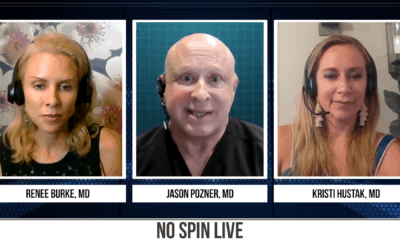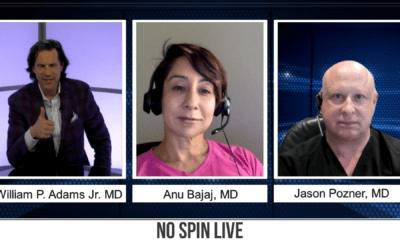
In this No Spin Live Special Edition, experts discuss for a 3rd consecutive week the important data driven issues and concepts surrounding the coronavirus / COVID-19 crisis. Drs. Charles Randquist of Stockholm, Sweden, Tom Wiener of Houston, Texas, David Sieber of San Francisco, and William P. Adams Jr. of Dallas have a lively discussion on the CVD-19 topic. All of these physicians are also scientists and have proven track records in data analysis, education and publication.
Data Must Be Analyzed Carefully
In this No Spin Live Special Edition, experts discuss for a 3rd consecutive week the important data driven issues concepts surrounding the coronavirus / COVID-19 crisis. Drs. Charles Randquist of Stockholm, Sweden, Tom Wiener of Houston, Texas, David Sieber of San Francisco, and William P. Adams Jr. of Dallas have a lively discussion on the CVD-19 topic. All of these physicians are also scientists and have proven track records in data analysis, education and publication.
Initial Disease Modelling Proving Inaccurate
Dr. Tom Wiener points out that initial modeling did not account for several things that we know now through science are true. These include that there is a significant portion of the population that has asymptomatic infection and has no issues. Initial modeling assumed that if 100 people got the virus that 5% of those would end up needing more extended intensive care and approximately 1% mortality. The key flaw in this logic is that at least 50% of these hundred people have no symptoms and therefore they should not be counted in the healthcare utilization numbers. Thus, in this example it’s really 5% of 50 people not 5% of hundred people. The experts also discuss due to this known how I degree of asymptomatic cases that there are many more cases therefore the denominator of the disease is far higher than initially thought and therefore modeling needs to be adjusted. Again in the example above where it is thought that 100 people have the virus; current data showing that actually 5 -10,000 people have been exposed.
Antibody Testing is Key
The group discusses the extreme importance of rapid serological antibody testing that is now newly available. These rapid antibody tests can give information on patients who have been exposed and now are at least partially immune to the virus. This has far-reaching implications both in strategy planning for public health as well as protecting healthcare workers treating patients with COVID – 19. The experts have been in touch with others around the world who are doing research on antibody testing including Dr. Jay Bhattacharya from Stanford University is heading up a random serologic in a body testing study in the Santa Clara, Los Angeles and national cohort. Dr Bhattacharya has also written some excellent science based article and made informative videos on COVID-19.
Extended Isolation Strategies Under Fire
Dr. Randquist once again overviews the differences in the Swedish strategy compared to much of the rest of the world. The experts also note differences in the German approach allowing some more normal daily behavior. The current data now clearly does not support extreme isolation/ lockdowns as being any better than some of the alternative strategies. Importantly the experts point out that the longer Global lockdowns continue that the effects of these including economic effects will result in far more mortality and morbidity than the COVID – 19 virus will ever produce. These are real life dilemmas that need to be quickly worked out especially in the face of new data showing the virus is not anymore dangerous than other viruses such as the flu and other recent population-based studies of fully tested ecosystems including the Diamond Princess, Iceland, and northern Italy all of which show that infection rates for the virus are far higher than current estimates and these impact modeling by orders of magnitude and reducing the case fatality rate to somewhere around 0.1 -0.5%.
Viral load appears to be key
One of the areas of concern is that there have been a low number of healthcare workers who have died from exposure to the virus while taking care of sick patients. Current research and studies indicate that this appears to be a function of the overall viral load. Individuals who are exposed to very low loads are felt to have high likelihood of asymptomatic infection. Conversely people who have large degrees of viral loads especially communicated from heavily infected patients have had an increased incidence of severe illness. The experts note that antibody testing may also help with strategies in healthcare to try and avoid unexposed healthcare workers from treating sick patients.
Data and Science is the Way Forward
The group concludes that now that there is significant science and data it will be important for all scientists, politicians and regulators as well as citizens to make sure to blend new strategies with what the science tells us. This is the way forward and the way we will put the COVID – 19 crisis behind us.















Facebook
Twitter
Instagram
YouTube
RSS